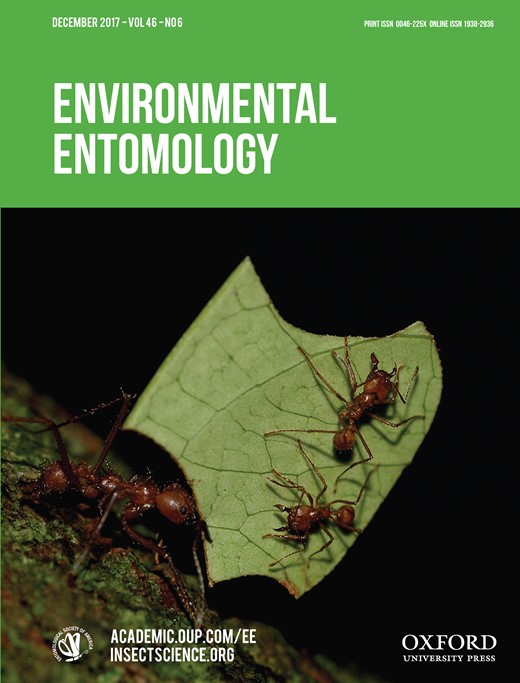-
Views
-
Cite
Cite
Hemchandranauth Sambhu, Tobin Northfield, Alliea Nankishore, Abdullah Ansari, Stephen Turton, Tropical Rainforest and Human-Modified Landscapes Support Unique Butterfly Communities That Differ in Abundance and Diversity, Environmental Entomology, Volume 46, Issue 6, December 2017, Pages 1225–1234, https://doi.org/10.1093/ee/nvx129
Close - Share Icon Share
Abstract
Tropical forests account for at least 50% of documented diversity, but anthropogenic activities are converting forests to agriculture and urban areas at an alarming rate, with potentially strong effects on insect abundance and diversity. However, the questions remain whether insect populations are uniformly affected by land conversion and if insect conservation can occur in agricultural margins and urban gardens. We compare butterfly populations in tropical secondary forests to those found in sugarcane and urban areas in coastal Guyana and evaluate the potential for particular butterfly communities to inhabit human-modified landscapes. Butterflies were sampled for 1 yr using fruit-baited traps in three separated geographical locations on the coast. We used nonmetric multidimensional scaling to assess differences in species assemblages and a generalized linear mixed model to evaluate abundance, species richness, evenness, and diversity. The secondary forests in all three locations supported higher butterfly abundance and diversity than other human-modified areas, although the magnitude of this effect varied by season and location. However, each land use supported its own type of butterfly community, as species composition was different across the three land uses. Sugarcane field margins and urban gardens supported populations of butterflies rarely found in our tropical secondary forest sites. Land management practices that encourage forest conservation along with butterfly-friendly activities in human settlements and agricultural areas could improve butterfly conservation. To this end, butterfly conservation in Guyana and other tropical landscapes would benefit from a shift from inadvertently to actively making the landscape attractive for butterflies.





